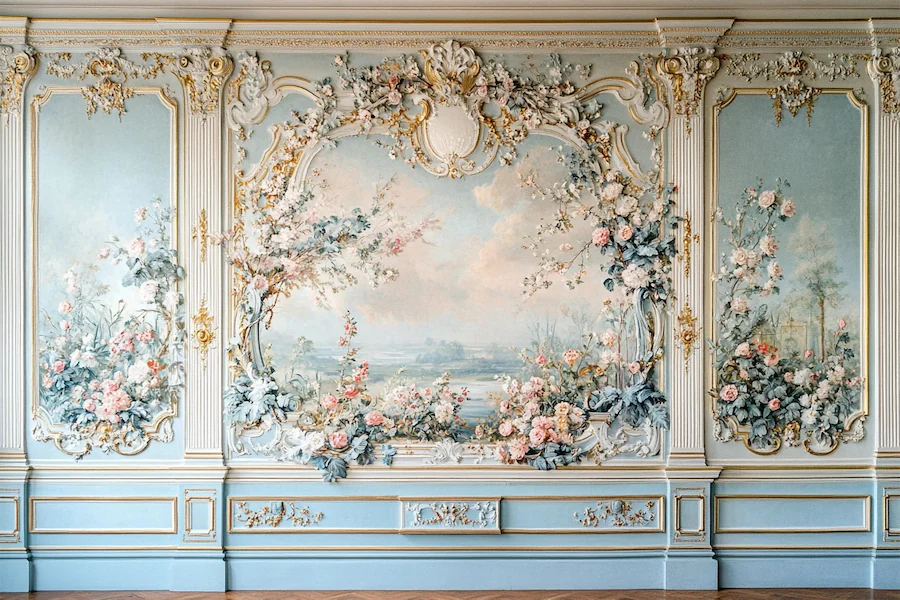Rococo wall design, emerging in early 18th-century Paris, is renowned for its lightness, elegance, and intricate ornamentation. This style marked a departure from the grandeur and symmetry of Baroque, embracing more playful and delicate aesthetics.
History and Origins of Rococo Wall Design
The term “Rococo” derives from the French word “rocaille,” meaning “rock work,” reflecting the style’s use of natural forms and asymmetrical designs. Initially, rocaille referred to plaster sculpted to resemble rocks, used in garden grottoes. By the early 1700s, these techniques transitioned indoors, with French plasterers creating delicate scrolling patterns on walls, ceilings, and wood paneling.
Key Features of Rococo Wall Design
- Asymmetry: Unlike the balanced compositions of Baroque, Rococo favored asymmetrical arrangements, adding a sense of movement and spontaneity to interiors.
- Natural Motifs: Decorative elements often included shells, flowers, vines, and scrolls, reflecting a fascination with nature and organic forms.
- Pastel Colors: Walls were adorned with soft pastel hues, creating a light and airy ambiance. These gentle colors enhanced the delicate ornamentation typical of the style.
- Gilding: Gold accents were liberally applied to moldings and decorative elements, adding opulence and highlighting intricate details. Mysite
- Mirrors: Large mirrors with ornate, gilded frames were integrated into wall designs to amplify light and create an illusion of expanded space.
Applications of Rococo Wall Design
Rococo wall designs were predominantly featured in salons, boudoirs, and reception rooms of the European aristocracy, serving as backdrops for social gatherings and artistic performances. The style’s emphasis on elegance and intimacy made it suitable for private chambers and intimate settings.
Considerations When Choosing Rococo Wall Design
- Space Compatibility: Rococo’s elaborate details are best suited for spacious rooms where the intricate designs can be fully appreciated without overwhelming the space.
- Maintenance: The complexity of Rococo ornamentation requires regular upkeep to preserve its beauty, as dust and damage can detract from the intricate details.
- Integration with Modern Elements: While Rococo is rooted in historical design, it can be harmoniously blended with contemporary elements. For instance, incorporating a Rococo-inspired feature wall in a modern interior can create a striking focal point that marries classic elegance with modern simplicity.
Conclusion
Rococo wall design epitomizes a period of artistic expression that celebrated lightness, elegance, and intricate beauty. Its distinctive features continue to inspire interior design, offering a timeless option for those seeking to infuse their spaces with historical charm and sophistication.
